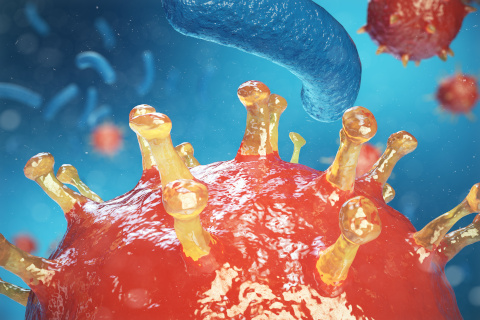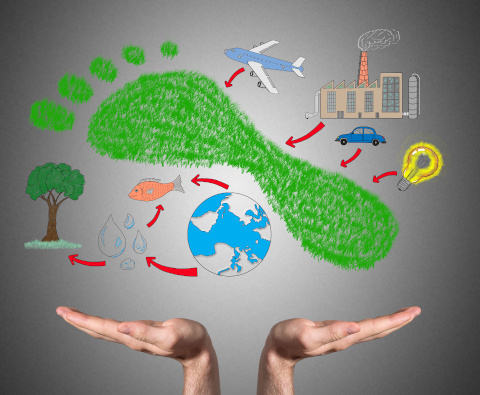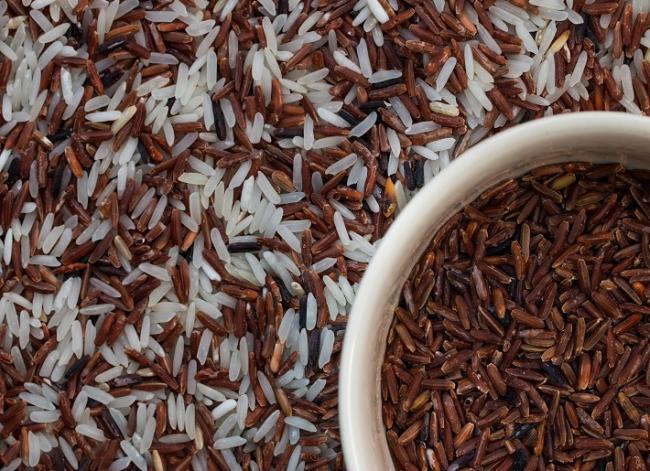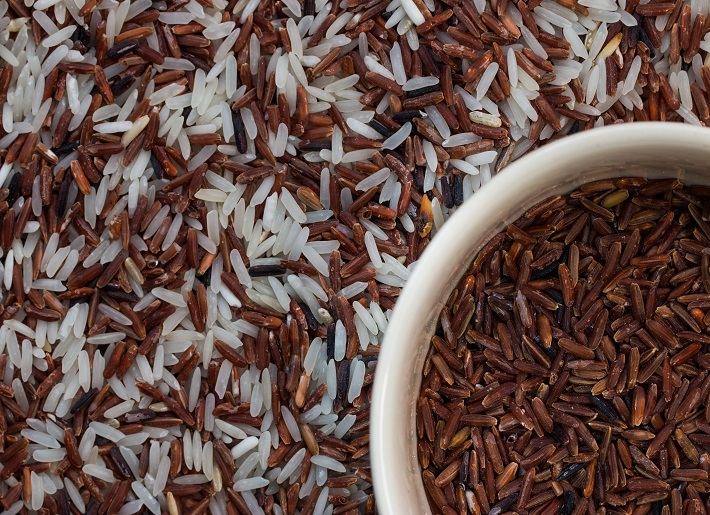Climate Change Is Impacting Human Health
desouzanaturopathic.com
Climate change is possibly the most important issue of the 21st century. The long term changes in the temperature of our planet will continue to impact not only our environments, but our food and our health. These small changes are not noticeable on a daily basis, but as the years go by, the steady change over the years cannot be ignored.
STATS ON CLIMATE CHANGE
Younger generations of Canadians have never experienced a true Canadian climate. Since 1998, the temperatures have steadily increased every year and are consistently higher than average. 17 of the 18 warmest years on record have occurred since 2001 (1).
Data from around the world is collected through air balloons, underwater devices and satellites in space. They monitor the changes in air and ocean temperatures, and send it back to weather stations for evaluation. The global temperature has been rising steadily for over a century, but we are noticing the downstream effects of this change more evidently today. According to the Climate Atlas of Canada, 97% of scientists agree that human activity is the result of the planet warming.
HUMAN ACTIVITY CAUSING PLANET WARMING

The rising levels of carbon dioxide in the earth’s atmosphere are the most evident change affecting our planet. Car pollution and many of our industries release excess carbon dioxide from the burning of fossil fuels. Because our ozone layer acts as a protective barrier in our atmosphere, the carbon dioxide gets trapped and creates a greenhouse effect. Over many centuries, and especially in the last century, the Earth begins to warm. This affects the ocean currents, the amount of rainfall and the extreme dry summer heat. For us, it translates into poor production of crops, loss of wildlife and spikes in human disease.
CLIMATE CHANGE AND HEALTH
Malnutrition in the world
Farmers in the USA have been reporting unusual weather patterns and inconsistent rainfall for many years. The Institute on the Environment from the University of Minnesota has been tracking the data from 20 000 districts around the world to compare precipitation and crop yield. They looked at the top 10 global crops, which include: corn, rice, wheat, soybeans, oil palms, sugarcane, barley, rapeseed, cassava and sorghum. It was estimated that these foods account for 83% of consumable calories worldwide. In the USA alone, the production of rice and wheat declined over the 4 year study. When translated into calories on people’s plates, it shows significant reduction in food supply (2). It was concluded that climate change is accounting for a 1% yearly reduction in consumable food calories from these top 10 crops.
If we look outside of the USA and consider developing countries, the decline is food supply is even more worrisome. India and Nepal have already reported a decline in their annual food calories to 0.8% and 2.2% respectively (2). Food calorie shortages are beginning to create a rise in world hunger after a 10 year steady decline. This raises many important questions about the long term health of our food industry and sustainable sources of food. Does genetically modified food stand a better chance for resisting climate change? Does the production of processed and packaged food contribute to climate change?
Spread of infectious disease

Climate change is exacerbating the spread of infectious disease. Many diseases live in animals for years and transmit to humans through bodily fluids. Humans often contract diseases by handling or eating an infected animal. The United States Agency for International Development estimates that 75% of all emerging and re-emerging infectious diseases originate from animals (3). This is thought to be due to increased human-animal interaction as a result of deforestation programs, including logging, mining, road building, and development of land. In certain parts of Africa, the Ebola virus has claimed thousands of lives over many years. Outbreaks seem to be after a dry season followed by heavy rain. The rain brings plenty of fruit, which then attracts the bats. Bats are thought to carry the Ebola virus and infect the fruit or transmit to other animals that also eat the fruit (3). The World Health Organization issued a warning that contagious diseases are expected to rise as a result of environmental and social ways of living. These diseases included malaria, Dengue fever, cholera and Lyme disease. These are all climate-sensitive diseases, transmitted by animals and insects, which thrive in higher temperatures and extreme weather (3).
Extreme Weather and Air Pollution
It is well known that asthma is easily triggered by air pollution and poor air quality. Air pollution includes gases, exhaust from cars, smoke from fires and dust particles. Poor air quality can result from high industrial air pollution and extreme weather events. As the Earth continues to warm, our summers are becoming excessively hot and dry. This is creating an opportunity for dust particles to sit in the air and reduce air quality. A study of young asthma sufferers found they were 40% more likely to experience asthma episodes on high pollution summer days than on average pollution days. Older adults are more likely to visit the emergency room with breathing problems in summer or during allergy seasons (4). Extreme heat also creates extreme weather patterns, which affect humans and wildlife. Forest fires around the globe are lasting longer than before and claiming more lives than before. Flooding seems to be happening in areas of the world that were never considered for flood warnings. The danger to human life can be significant and unexpected, resulting in injury, fatality, and chronic disease.
Mental and Physical Health

People in developing countries are most vulnerable to global health risks, but climate change is posing challenges to even the wealthiest countries in the world. Heat waves are lasting longer than ever and this, paired with significant air pollution, have accounted for an increase in deaths related to heat stroke and dehydration. Northern countries are more at risk for these fatalities because they are not well-adapted to high temperatures and have not adjusted lifestyles accordingly. Athletes, outdoor workers, and homeless people are exposed to extreme temperatures and create a stressor on the body. The elderly, pregnant women and those with pre-existing medical conditions are less able to regulate body temperature and more at risk of illness. Extreme heat puts a lot of stress on the cardiovascular system, and increases blood flow to the skin to increase sweating and cool down. This can be a challenge for anyone already on cardiovascular medications, which can regulate blood pressure, cholesterol, blood thinning, or heart rhythm. Mental illness is already increasing in awareness, but has especially spiked in areas after an extreme weather disaster. The loss of homes, loved ones and livelihood have resulted in increased depression, anxiety and post-traumatic stress disorder. Of course, certain populations are more vulnerable than others, and those with pre-existing mental illness will experience a greater effect.
HOW WE CAN HELP CLIMATE CHANGE
The global community of environmental workers have come together to encourage every household to consider climate change. According to the David Suzuki Foundation, Canada is the top per-capita energy consumer worldwide! The small changes of making your home more energy efficient can make a difference on a larger scale. The foundation encourages people to eat more local foods and choose sustainable sources of nutrients. Eating less meat will help reduce the carbon footprint and encourage the consumption of vegetables (5). In terms of air pollution from transportation, rideshares and carpooling are some of the best options for a Canadian winter. When fixing up your home, look to upcycle and refinish old pieces of furniture before buying new. Our governments need to know how concerned we are with the health of our planet and lives of our future generations. Much of the industrial air pollution we breathe every day is the result of large political decisions, business deals and money-making programs whose benefits we don’t get to enjoy. There are online petitions to be signed and many ways to become politically active. However, on a consumer scale, we can make changes by choosing smarter options and purchasing sensible alternatives that can promote an environmentally-friendly message. At the end of the day, we have to take care of our planet and ensure there is a healthy living environment for our future generations.
REFERENCES:
- The Climate Atlas of Canada (July 2019). Climate Change: The Basics. Retrieved from: https://climateatlas.ca/climate-change-basics
- Ray, Deepak. (July 2019) Climate change is affecting crop yields and reducing global food supplies. The Conversation. Retrieved from: http://theconversation.com/climate-change-is-affecting-crop-yields-and-reducing-global-food-supplies-118897
- Cho, Renee. (September 2014) How climate change is exacerbating the spread of disease. Earth Institute, Columbia University. Retrieved from: https://blogs.ei.columbia.edu/2014/09/04/how-climate-change-is-exacerbating-the-spread-of-disease/
- Asthma and Allergy Foundation of America. (2020). Air pollution. Retrieved from: https://www.aafa.org/air-pollution-smog-asthma/
- David Suzuki Foundation. (2020). Top 10 things you can do about climate change. Retrieved from: https://davidsuzuki.org/what-you-can-do/top-10-ways-can-stop-climate-change/
















































